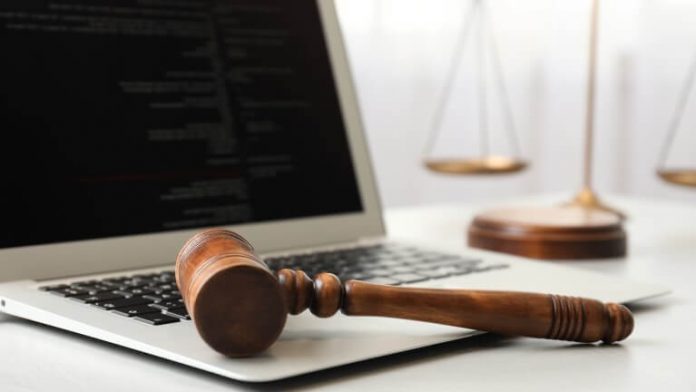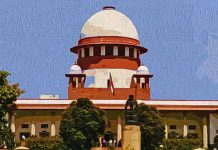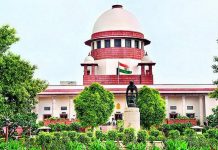This article is written by Advocate Nikhil Ramdev and Gopika Agnihotri.
Table of Contents
Introduction
The debate of setting up regional benches of the Supreme Court is not new. This has been discussed in various Law Commission reports and the Supreme Court as well. This paper attempts to analyse some of the questions raised in the case of V. Vasanth Kumar v. H. C. Bhatia, reported as (2016) 7 SCC 686 and whether they are still valid especially in the era of virtual courts. The case has been referred to the constitutional bench and the matter is sub-judice. In the said case, the Hon’ble Supreme Court framed various issues, concerning possible structural reforms at the highest echelons of the Indian judicial system. We are analysing the following questions framed by the Supreme Court in the said case:
“(a) Would the fact that the Supreme Court of India is situated in the far North, in Delhi, rendering travel from the Southern states and some other states in India, unduly long and expensive, be a deterrent to real access to justice?
(b) Would the Supreme Court sitting in benches in different parts of India be an answer to the last-mentioned problem?”
Law Commission reports on regional benches
Various Law Commission reports (95th, 120th, 125th and 229th) and the standing committee reports, have recommended setting up regional benches. The Law Commission in its 125th report titled “The Supreme Court – A Fresh Look”, in paragraph 4.17 stated “The Supreme Court sits at Delhi alone. The Government of India, on a couple of occasions, sought the opinion of the Supreme Court of India for setting up a Bench in the South.” The reason for setting up regional benches, as per the said report is that “….those coming from distant places like Tamil Nadu in the South, Gujarat in the West and Assam and other States in the East have to spend a huge amount on travel to reach the Supreme Court” and “There is a practice of bringing one’s lawyer who has handled the matter in the High Court to the Supreme Court. That adds to the cost. And an adjournment becomes prohibitive.” The said report further states that the advantages for setting up regional benches being “…. considerably reduce costs but also the litigant will have the advantage of his case being argued by the same advocate who has helped him in the High Court and who may not be required to travel long distances.” The 229th Law Commission report also reiterated that the establishment of four cassation benches of the Supreme Court is the need of the hour.
Further, 2nd (2004), 6th (2005) and 15th (2006) the Parliamentary Standing Committee on Law and Justice has repeatedly suggested that to promote speedy justice available to the common man, benches of the Supreme Court have to be established in the Southern, Western and North-Eastern parts of the country. In the 15th report, in Paragraph 8.36, the Standing committee stated “The Committee, therefore, endorses its earlier view that establishment of benches of the Supreme Court in other parts of the country would be of immense help to the poor who can not afford to travel from their native places to Delhi.” Again, in paragraph 6.8 of the 28th Report of the Standing Committee, reiterated setting up regional benches on the premise that “it is not possible for the people living in far-flung and remote areas to come to the National Capital to seek justice for various reasons”. From the aforesaid, it is clear that the main arguments for setting up regional benches of the Supreme Court are to reduce the transaction cost of litigation to ensure wider access to justice. Transaction cost primarily includes inter alia travelling cost from far-flung areas, cost of bringing one’s lawyer who has handled the matter in the High Court, adjournment becomes prohibitive, accommodation costs among others.
Benefits of virtual courts over regional benches
It is an undeniable fact that the transaction cost of litigation, especially in the Supreme court, for those living in far-flung areas of the country, is exorbitant. But the question arises, is this reason sufficient for the establishment of Cassation Benches and the only answer to the said problem? In our humble submission, the answer is negative. The arguments for setting up of regional benches, as detailed above, in various Law Commission reports and Parliamentary Committee reports may have been one of the solutions some years back or even during the immediate pre-covid times, but they are not now. The COVID-19 pandemic has disrupted the justice delivery system like never before. The pandemic was an eye-opener. It has shown that for access to justice, we need access to technology. Further, we humbly submit that the cost of setting up regional benches will be massive, which will include the cost of purchasing land, setting up infrastructure, additional manpower, cost of running the regional bench among other things. The resources for building regional benches can be utilized to strengthen digital infrastructure and enhance the reach of virtual courts, as admittedly, digital justice is cheaper and faster besides addressing locational and economic handicaps, and thus, the cost-benefit ratio for investing in the latter is much more than the former.
In our humble submission, COVID-19 has shown that to strengthen and accelerate the speed of justice delivery mechanism, adaptation and innovation in technology is required, not regional benches. During the lockdown, virtual courts were set up and have been a success, even after apprehensions from various eminent circles. Over 18 lakh pleas were filed across courts in India during the lockdown of which 7,90,112 have been disposed of. The subordinate courts too had handled over 7.3 lakh cases virtually. A Rajya Sabha committee headed by Shri Bhupender Yadav strongly pitched for virtual courts and observed: “digital justice is cheaper and faster besides addressing locational and economic handicaps; ensures the safety of vulnerable witnesses providing testimony; expedites processes and procedures and are an improvement over traditional Courts as they are most affordable, citizen-friendly and offer greater access to justice”. The Rajya Sabha committee and the Judges of the Supreme Court have reiterated that virtual courts are here to stay, but it will be a hybrid model i.e. the physical courts will not go away completely. The advantages of virtual courts have been best described by the Hon’ble Madras High Court in an order dated 06.08.2020, passed in Crl. OP.(MD)Nos.7655 & 7656 of 2016, in the following words:
“….in the past two months, this Court has also witnessed Counsel representing their cases sitting in car. Even while travelling in their car, Counsel is comfortable in placing their cases before the Court. Counsel, who are interested in their cases, even if they are staying in remote places, are reaching out to a place where they are having connectivity and are presenting their case comfortably”
The Hon’ble Court further observed that:
“This Virtual Court is a boon to the entire Legal Fraternity. Even a Mofussil Advocate residing in a remote village in Kanyakumari can comfortably present his case before this Court, the Principal Seat and even before the Hon’ble Supreme Court”
The proponents of the regional bench of the Supreme Court and physical hearings may argue that virtual courts have many limitations namely: lack of access to digital infrastructure in courts, lack of internet connectivity in remote areas, lawyers are not technologically savvy, to name a few. However, the Department of Justice (DOJ) has formulated various schemes and initiatives to address issues related to digital infrastructure in courts like Ecourts Project, which is in phase-II. Under the project, more than 16,845 district and subordinate courts have been completely computerised and made Information and Communications Technology (ICT) enabled, Efiling has been made possible from anywhere in India. JustIS mobile app for judicial officers, for court management. The app comes with salient features like pendency details, disposal details and with the interesting option of maintaining a digital diary of important cases with the option of making personal notes under the ‘add notes option. Another scheme by DOJ – Tele Law services, which facilitates delivery of legal advice through a panel of lawyers stationed at the State Legal Services Authorities and Common Services Centers (CSC) to the disadvantaged and marginalised, has been a success. More than 3 lakh cases have been registered under Tele-law service through CSC at the gram panchayat level. For internet access, various schemes like BharatNet fibre optic, wi-fi at railway stations have been formulated. As far as lawyers not being tech-savvy is concerned, we humbly submit that the legal profession is a profession of learning, thus, upskilling for lawyers will not be a difficult task.
Conclusion
On the conspectus above, we humbly submit that the questions raised by the Supreme Court, in the case of V. Vasanth Kumar (supra) stand answered. The virtual courts have made the aforesaid two questions and the arguments of setting up regional benches of the Supreme Court as infructuous. The pandemic had a direct and far-reaching impact on the functioning of the judicial delivery mechanism. The executive and judiciary worked in tandem, which ensured that the disruption due to the pandemic was transitory and fundamental rights enshrined under Article 21 of the Constitution of India are not denied. The initiatives by our courts and the DOJ has made it possible for lawyers from South India, North- East and other states to file cases before the Supreme Court or any other court in India, from their home state, thus saving travelling, accommodation and other expenses. Access to justice and opportunities for securing justice (Article 39) for far-flung places and remote villages requires access to technology and not the regional benches. The need of the hour is to strengthen the existing infrastructure to cater to the digital justice needs of today and the future and not the establishment of regional benches.
References
- 229th Law Commission Report titled as “Need for division of the Supreme Court into a Constitution Bench at Delhi and Cassation Benches in four regions at Delhi, Chennai/Hyderabad, Kolkata and Mumbai”
- https://www.outlookindia.com/newsscroll/over-18-lakh-pleas-filed-in-courts-during-lockdown-sc-judge/1902463
- http://164.100.47.5/committee_web/Press_ReleaseFile/OTHER/1/327P_2020_9_9.pdf
- Annual report 2019-2020 of Ministry of law and Justice
LawSikho has created a telegram group for exchanging legal knowledge, referrals and various opportunities. You can click on this link and join:
 Serato DJ Crack 2025Serato DJ PRO Crack
Serato DJ Crack 2025Serato DJ PRO Crack











 Allow notifications
Allow notifications



